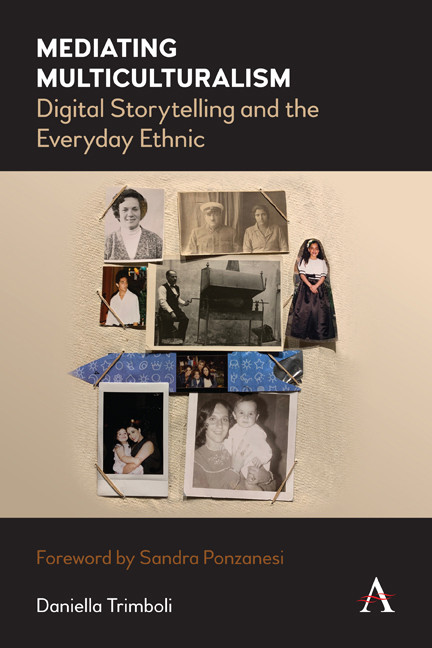Part Two - Multicultural Bodies
Published online by Cambridge University Press: 21 August 2020
Summary
This section closely analyses digital storytelling case studies in terms of their narrative structure, aesthetic techniques and audio components so as to illustrate how migrant digital stories manifest in accordance with normative whiteness. Digital stories produced via the Australian Centre for the Moving Image (ACMI) form the focus of the individual digital storytelling case studies, and the Junk Theory (JT) project facilitated by community-based arts organisation Big hART is the focus of the collaborative digital storytelling analysis. Junk Theory was a creative response to the 2005 Cronulla race riots in Western Sydney/Eora, Australia. A lot has been written about these riots, but no scholarly attention has been paid to this significant artistic, community response. The prominent use of the face and hands in both kinds of digital stories is explored, illustrating how the genre deploys certain notions of ‘humanness’ in relation to whiteness. This allows for a discussion of how everyday multiculturalism can normatively structure both the individual body and the body of ‘the nation’. The analysis reinforces the argument I made in Chapter One that scholarship on everyday multiculturalism and new racism understates the corporeality of racialisation and illustrates how residues of biological racism continue to haunt digital projects – and, indeed, contemporary cultural theory.
- Type
- Chapter
- Information
- Mediating MulticulturalismDigital Storytelling and the Everyday Ethnic, pp. 69 - 70Publisher: Anthem PressPrint publication year: 2020



